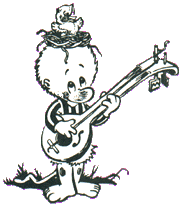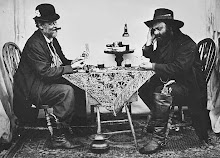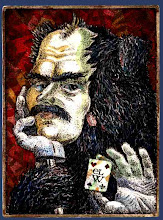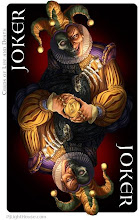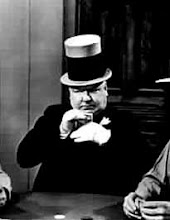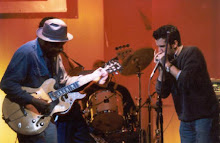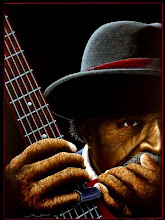The Basics.
There are 1326 two card combinations in Texas Hold'em, including suits, 169, not counting suits. Seventy-eight are Pairs (6x13). 20 Broadway (A-10) cards and 16 of them are Suited Connectors.
You should get a pair, once every 17 hands or someone should be dealt a pair once every 17 hands, that's 16:1 that someone has a pocket pair, if you don't have one.
The odds are 2.67:1 that your opponent also does not have a pocket pair.
If your two cards are not a pair, but suited, it's still
118:1 that you will not hit a flush on the flop.
You can not make a straight without a 5 or a 10. The 5 and 10 are KEY cards. It's still
76:1 against someone hitting a straight on the flop.
If your two cards are not a pair, you will hit a pair on the flop, 40% of the time or it is
60% that your opponent did not hit a pair on the flop.
There are two types of hands in Texas Hold'em.
A pair or better and a draw to a straight or flush. Every hand played after the flop is a contest between these two types of hands. The draws are broken down to connected cards, gapped cards, suited connectors and suited gaped cards. Anything else isn't worth looking at execpt when you are heads-up.
This is why aggression is so important in Poker, most players do not make their hand on the flop.
In a normal Cash/Ring game, you will most likely be dealt 30 to 40 hands per hour. In Tournament play, deep stack, you should be dealt 30 to 40 hands per hour in the early stages and 25 to 30 in the middle stages, with a full table. In the later stages it could average 30 to 40 hands per hour and up to 50 hands per hour short handed to 60 hands per hour with 3 or less players.
It helps to start with a good hand.
Top 5 hands: AA,
KK,
QQ,
AKs,
AQs (26 combinations) can be played from any position.
AKs,
AQs, usually need to bet 3xBB in early position, 2xBB to 3xBB in middle or late position.
AA,
KK, may be best to reverse the betting process. The closer to the button, the more you bet, unless everyone is folding, as if you are trying to steal the blinds. Don't fall in love with
AK or
AQ, they are still only drawing hands. You will only flop an
A or
K 33% of the time, but an
Ace,
King, or
Queen, about 50% of the time.
You will flop a flush draw only about 10% of the time.
Group 2 hands: JJ,
TT,
AJs,
KQs,
AK (29 combinations)
JJ,
TT, Call in early position and middle position. Can raise in late position to steal the blinds or re-raise a small bet if everyone else has called. AJs,
KQs,
AK, will flop a straight, flush, or pair about 50% of the time. Call from early position or middle position, raise to steal the blinds or as a probe from late position or call raises if only one other person has raised before you.
Group 3 hands: ATs,
KJs,
QJs,
JTs,
AQ (25 combinations) Always see the flop, unless there are several raisers.
Group 4 hands: KTs,
QTs,
J9s,
T9s,
98s,
AJ,
KQ (38 combinations)
Limp in unless you are on the button.
Middle Low Pocket Pairs: 99,
88,
77,
66 (16 combinations) Call in middle to late position or with less than 3 players.
Low Pocket Pairs: 55,
44,
33,
22 (16 combinations) Call in late position, or with only 2 or less players in the hand.
Trap hands
Use when you have a really strong hand and someone else has a lesser hand they can’t lay down.
The trap is usually sprung by the flop. Any pre-flop 2 or 3 gaped middle cards; like 9-6, 8-5, or small pairs that have hit a set or better. Only call small bets, if you don’t hit the flop, don’t bet unless in position, must always be played cheaply, fold if not hit on the flop.
Against good players, large bets like 6xBB to 2x pot or more, from late position, when all else have folded, may be a trap with
AA,
KK, otherwise it’s someone trying to steal the blinds with a weak hand.
Pre-FlopHands
High pairs: (
AA,
KK,
QQ): vary from call to big raise (3x-5x); re-raise 3x the raiser, re-raise the re-raiser.
KK will flop an over card about 20% of the time,
QQ about 33%, each successive lower card about 12% greater than the last.
(
AA,
KK) Can slow play a tight table or against loose players, but always re-raise the raiser at least 2 times their raise.
(
QQ) vary your raises; call, do not re-raise unless heads-up only or the raise was small
Middle pairs: (
JJ,
TT): Raise 2x,3x, do not call or slow play; raise only, do not re-raise, unless heads-up.
TT will see more action and likely to flop possible straight draws,
due to being a KEY card.
Mid-Low Pairs: (
99,
88,
77,
66): Raise 1x-2x, call small raises, do not re-raise. Likely to flop straight draws.
Low Pairs: (55, 44, 33, 22) Raise 1x-2x in early position, call in Middle to Late Position; Fold large raises.
There is a 10% chance Pairs will make a SET by the river make, 16% for 2 Pair, 1% for a Full House, and about .25% for 4 of a Kind.
AK,
AQ,
AJ (suited or un-suited): Raise 2x-3x, call small to medium raises, fold to large raises except for heads-up, then call. Good hands to raise in the blinds, but only 1x BB.
AT-
A6 (suited): Call all small bets, raise in early position 1x, fold all large bets, except when heads up.
AT-
A6 (un-suited): Call all small bets, don't raise or re-raise, fold all large bets, except when heads up. Try to see the flop cheaply. Call in early position, can call small raises if less than 3 other players.
A5-
A2 (suited & un-suited); Call all small bets, fold 2x+ raises and large bets, except when heads up. Suited has more options than un-suited. Call suited cards in early position, fold if raised.
Move up a group if someone raises or bets 3x or more before you, unless you are heads-up
KQ-
KJ-
KT-
QJ-
QT (suited); bet 2x-3x in any position, call any small bet, check any normal bet or if more than 3 remaining players.
KQ-
KJ-
KT-
QJ-
QT (not suited); bet 2x-3x in early position, bet 1x-2x in middle or late position, call any small bet, check any normal bet or if more than 3 remaining players. Fold any large bet.
Any other 19+ hand: (suited), bet 1x-2x if everyone checks, call small bets, fold large bets. (Points)
Any other 19+ hand: (not suited); call small bets, check if possible, fold to large bets
Middle suited connectors: check if possible, bet in late position, call small bets in middle position, fold to large bets. Likely to flop flush and straight draws.
Middle non-suited connectors: check if possible, call small bets in late position, fold large bets. Likely to flop straight draws.
Low suited and non-suited connectors: check if possible, bet in late or middle position, fold any bet if more than 2 remaining players. Likely to be middle or low pair. Great trap hand if a set is made on the river.
Gapped suited cards: Try to keep the gaps to 2 or less. The higher the lead card the better, K-2 can be bet in late position, best to check only; Q-2 check only, fold any other, unless heads-up, then call only small bets. Cards with 1 gap are more likely to hit a flush than a straight. The chance of hitting a straight with 1 gap is the same as any suited connector.
Gapped non-suited cards: Try to keep the gaps to 2 or less. Cards with 1 gap have the same chance of hitting the flop for a straight as any non-suited connector.
Mental Exercise: Remember the last 3 flop textures. The probability is higher of a favorable flop hitting your hand if your hand is the opposite of the previous flops.
(Gambler's Fallacy, but you will be surprised at how often it happens)





















